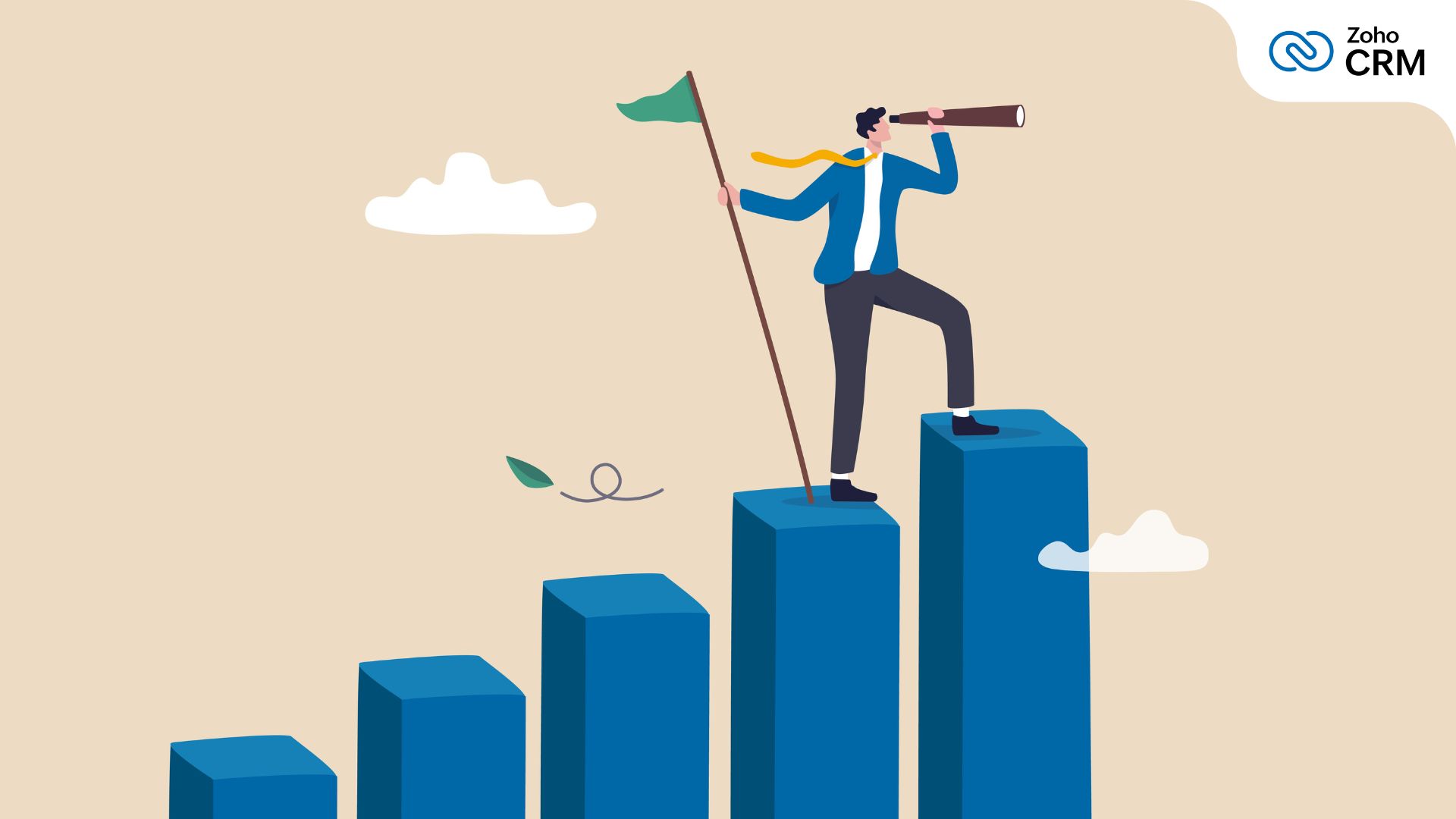How inbound sales wins over the modern customer
- Last Updated : July 29, 2024
- 251 Views
- 4 Min Read
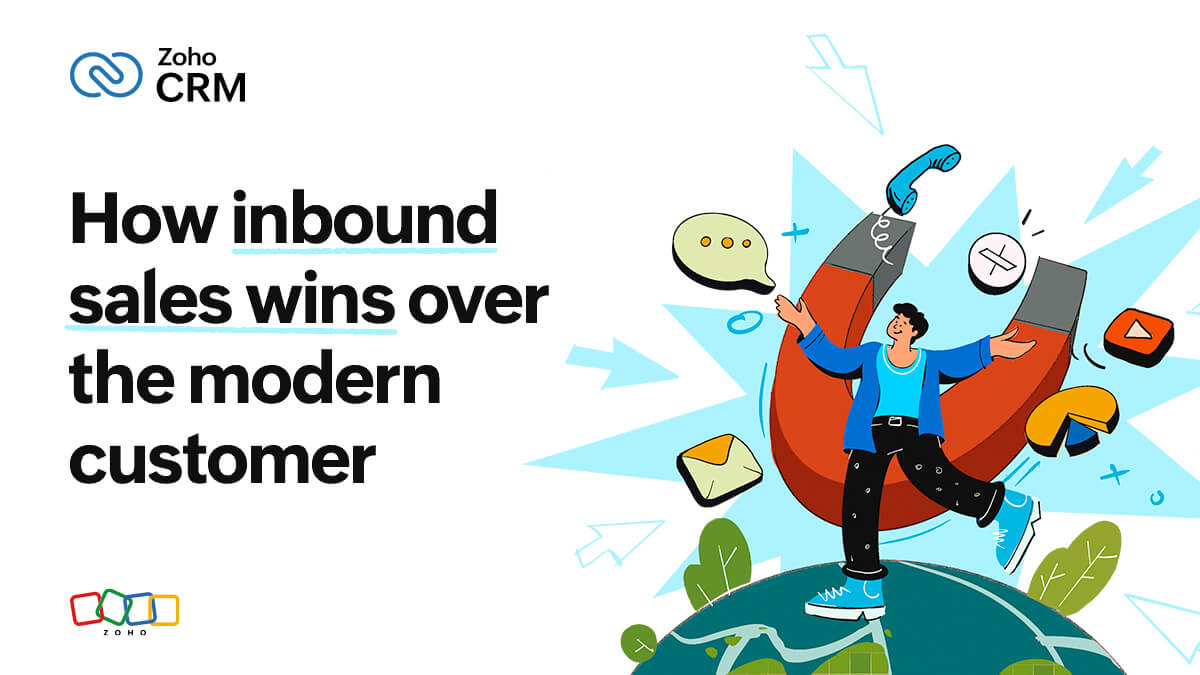
Do you recall a time when salespeople would relentlessly cold call or go door-to-door, pitching their products or services? Fast-forward to today; can you imagine a salesperson at your door, asking to spare a few minutes? Not your ideal Saturday afternoon, right?
Using traditional outbound sales methods may not be the most effective sales approach for the modern customer—a self-directed and research-driven buyer. It's essential for businesses to understand their decision-making process and enable them to make the first move. In other words, you need an inbound sales strategy.
Companies like Apple Inc. have mastered inbound sales, resulting in a unique brand persona and a community of loyal customers. If anything, Apple's influence in the market is hard evidence that this approach, in fact, works!
What are inbound sales?
Inbound sales focus on curating marketing content, insights, and solutions to encourage interested prospects to reach out to sales teams. Its objective is to build trust and offer value to potential prospects through social media, content marketing, podcast interviews, blogs, and more.
It's a customer-centric approach that guides modern buyers to discover your brand through numerous channels. It not only helps generate leads but also establishes a brand image and builds trust among potential customers.
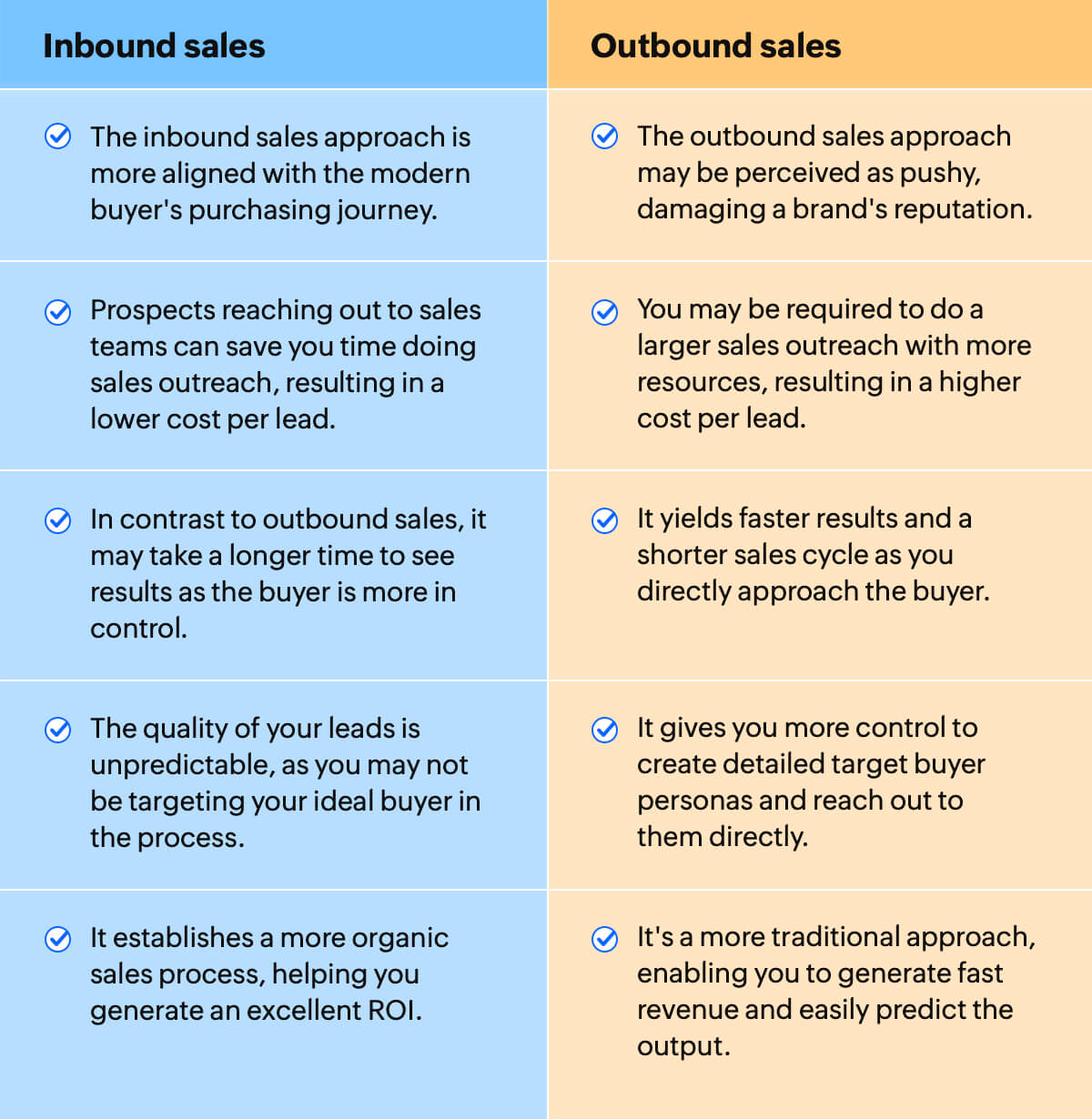
“If you have more money than brains, you should focus on outbound marketing. If you have more brains than money, you should focus on inbound marketing.” - Guy Kawasaki
Both inbound and outbound sales can be effective strategies, depending on your business goals. If you're looking to move leads through the sales cycle quickly and improve customer relationships, then inbound sales is the most preferable approach.
For a successful inbound strategy, you need to first map the buyer's journey to get a strong understanding of your potential customer and tailor an approach specific to their needs.
What is the buyer's journey, and why is it important?
The buyer's journey outlines the buying process of a potential customer, which is crucial for creating a strong sales process. Consisting of three stages—awareness, consideration, and decision—each stage provides insights into the needs, behavior, and decision-making process of a potential customer.
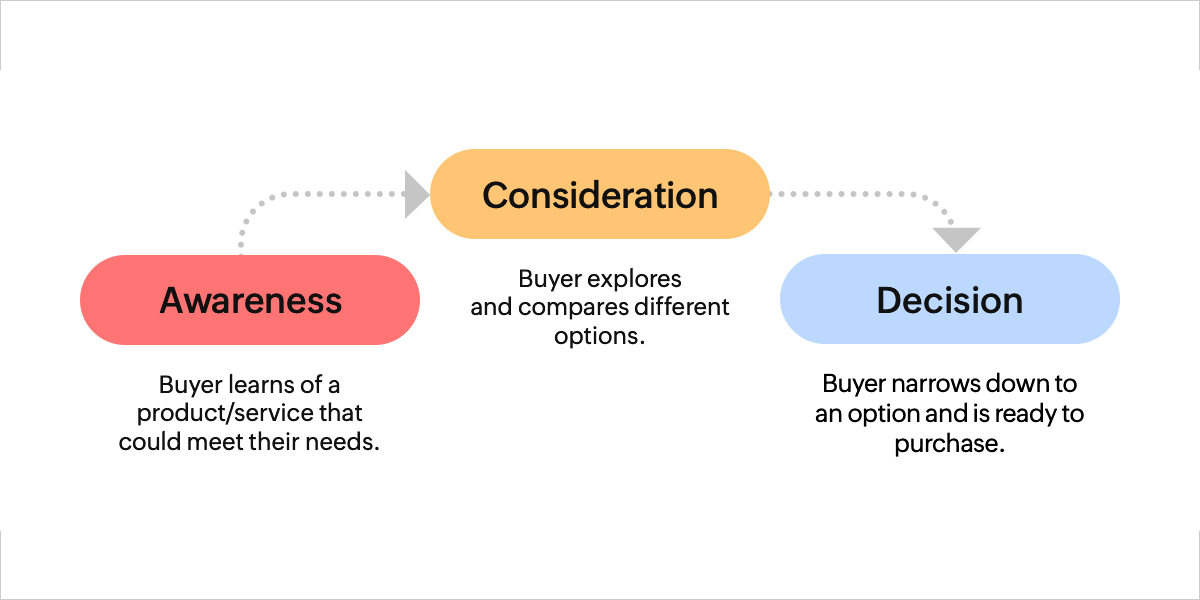
- Awareness: The potential customer learns about your brand and its offerings by engaging with your content through advertising, blogs, social media, or personal experiences.
- Consideration: The potential customers compare your offerings with other options, weighing the pros and cons. This stage involves a lot of research, and the customer may even try to connect with an inbound sales representative.
- Decision: Finally, the potential customer narrows down an option and is ready to make a purchase. At this point, businesses must ensure a seamless buying experience to transition the prospect into a paying customer.
"Instead of one-way interruption, web marketing is all about delivering useful content at just the precise moment that a buyer needs it.” - David Meerman Scott
Building a strong inbound prospecting strategy
Once you've outlined your buyer's journey, you'll have a better understanding of their preferences and actions at each stage. Next, create an inbound sales strategy that aligns with the buyer's journey by engaging the right prospect with the right content, at the right time.
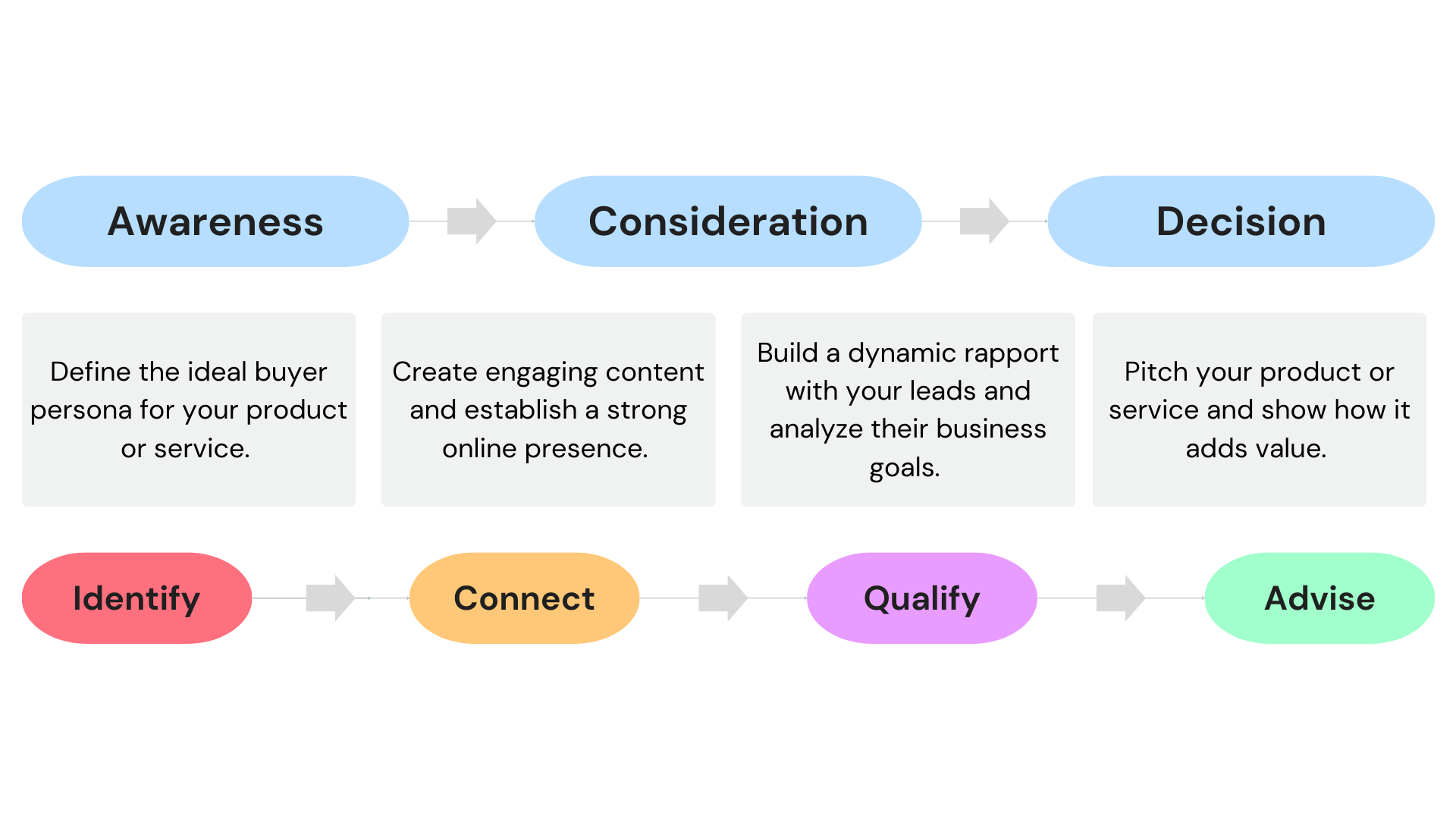
- Define the buyer's persona: Identify the ideal buyer by categorizing prospects based on demographics, pain points, and purchasing patterns. Customer profiling requires significant efforts in market research and sales insights. Utilize a CRM tool to enable your customer-facing teams to collaborate and add valuable context to your sales approach.
- Create SEO-optimized content: 81% of consumers conduct research on a company online before making a purchase. Most customers today prefer to interact with brands that have a professional presence on social media platforms. Share valuable content through strong social channels and get insight into how they engage with it. Continuously improve the quality of your content based on their preferences.
- Build a lead qualification process: Define the characteristics of a qualified lead and implement an efficient qualification process. Analyze their pain points, address their challenges, and revisit their goals to build a dynamic rapport with them. Sales force and marketing automation tools enable you to analyze, engage, and nurture leads effectively.
- Pitch your product or service: Enable your inbound sales representatives to tailor solutions to the specific needs of qualified leads. By establishing the buyer's context and offering a customized solution, you can present a compelling case for your product or service and accelerate deal closures.
"How do you know your content is relevant? Increased social traffic, social engagement, and higher quality leads." - Jason Miller
Revolutionize your sales with Zoho CRM
In The Sales Acceleration Formula, Mark Roberge highlights inbound prospecting as a much-needed approach to foster strong customer relationships and generate high-quality leads. However, the road does not end with you just curating an effective sales strategy; you also need to implement it seamlessly. That's where Zoho CRM extends its support.
Zoho CRM streamlines your sales, marketing, and service activities, creating a smooth customer journey. Along with a user-friendly interface, it offers a wide range of capabilities to help businesses of all sizes streamline their sales processes and manage customer interactions.
Ultimately, your business needs to adapt to the preferences of modern customers, and Zoho CRM offers the perfect solution to do so. A dynamic sales strategy along with a robust CRM tool can help your business achieve its goals and stay ahead in today's competitive market. Transform the way you sell to the modern customer today—try Zoho CRM!
